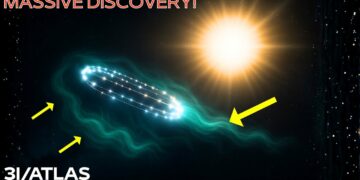Graham Hancock, a British writer and journalist, has spent over 30 years exploring the possibility of a lost advanced civilization in prehistory. He argues that this civilization, far from being a sudden creation of hunter-gatherers, involved a transfer of sophisticated technology. Ancient myths, such as Plato’s story of Atlantis—a thriving society of great cities, advanced agriculture, and powerful ships founded by gods like Poseidon and Atlas—support this idea. Plato described Atlantis as a civilization that grew corrupt, leading to its destruction by fire, earthquakes, and floods around 9,600 BC (11,600 years ago), a date strikingly close to modern geological findings.
Hancock challenges mainstream archaeology’s timeline, which denies the existence of such a civilization, claiming slow, steady human progress. He points to scientific evidence of a global catastrophe between 12,800 and 11,600 years ago, known as the Younger Dryas, likely caused by comet fragments striking Earth’s ice caps. This event, marked by a “black mat” layer of ash, soot, nano-diamonds, and impact proxies, caused megafauna extinctions, disrupted ocean currents like the Gulf Stream, and triggered extreme cooling. A second impact around 11,600 years ago may have ended the Younger Dryas, causing rapid warming, sea level rise (Meltwater Pulse 1B), and potentially the flooding of Atlantis.
Archaeological discoveries like Göbekli Tepe in Turkey, dated to 11,600 years ago, further support Hancock’s theory. This megalithic site, with massive stone pillars deliberately buried after centuries of use, predates Stonehenge by 7,000 years and shows no evolutionary development, suggesting advanced knowledge. Göbekli Tepe may have spread agricultural knowledge to nomadic peoples, hinting at a lost civilization’s influence. Similarly, the Great Pyramids, aligned with Orion’s Belt, and Stonehenge, tied to solstices, demonstrate ancient mastery of astronomy and engineering.
Hancock also highlights ancient navigation skills, evidenced by maps like the Piri Reis map of 1513, which accurately depicts Antarctica’s ice-free coastline—impossible unless mapped thousands of years earlier. Compiled from over 100 older sources, possibly from the Library of Alexandria, this map shows precise longitude, a concept not mastered until the 1700s. Other maps reveal Ice Age coastlines, like the submerged Bimini Road, suggesting ancient sailors mapped the world when sea levels were lower. These findings imply a civilization with advanced knowledge of geography, mathematics, and navigation.
Antarctica plays a central role in Hancock’s theories. Fossils from the Eocene (56–34 million years ago) show it was once warm, lush, and ice-free, part of Gondwana. As it drifted south, cooling currents formed its ice sheet. The Piri Reis map’s depiction of an ice-free Antarctica fuels speculation of ancient exploration or even hidden ruins beneath the ice, possibly linked to myths of a hollow Earth or secret expeditions like Operation Highjump in the 1940s. While mainstream scholars label Hancock’s work pseudoscience for its focus on speculative ideas, he argues archaeology is too rigid, ignoring evidence of a pre-Ice Age civilization.
Hancock’s research, shared on platforms like The Joe Rogan Experience, suggests survivors of this lost civilization influenced early cultures in Egypt, Sumer, and Mesoamerica. Ancient structures, maps, and myths—like the Great Flood—point to a forgotten era of advanced knowledge, erased by cataclysms but preserved in fragments. He urges us to rethink human history, proposing that beneath the sands, ice, or seas, clues to this lost world await discovery, challenging everything we believe about our past.























